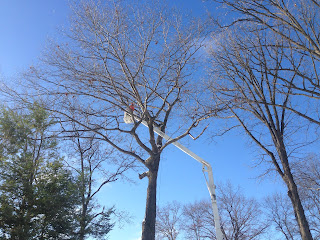As mentioned in several previous posts, poa annua, our primary grass on greens, tees and fairways is susceptible to winter damage. That unsettling fact always has me concerned heading into winter. Although we have no control over the winter weather, we can control what we do for the plants to put them in the best position to succeed.
Our winter preparation has not dramatically changed over the years. Our goal is simple: to have as many strong plants as possible.
To accomplish this, we take proactive measures with our maintenance practices starting at the end of the summer.
At the end of August, we aerify. Aerification relieves compaction, increases pore space, increases water infiltration, and provides an area for increased rooting.
Reduced mowing late in the fall allows for increased leaf blade surface which allows for additional photosynthesis and better rooting.
 |
Sun angles in the autumn are reduced which decrease photosynthesis. In our weekly sprays, we supplement the plants with various nutrients and amino acids, which help increase the plants' carbohydrate reserves and winter hardiness.
Deep-tine aerification performed in early November creates 10" deep holes to increase water infiltration and air porosity.
Shade reduction will continue this winter as we prune trees around greens to reduce the amount of shade. Much of the winter damage in past years was located on shaded areas on greens where snow and ice did not melt quickly enough before refreezing.
All of these practices work hand and hand to put the plants in the best possible position to succeed. I feel good with where the plants are heading into winter. They have had good color and density this entire fall and seem as strong as ever. We are hopeful Mother Nature will cooperate with us this winter.



